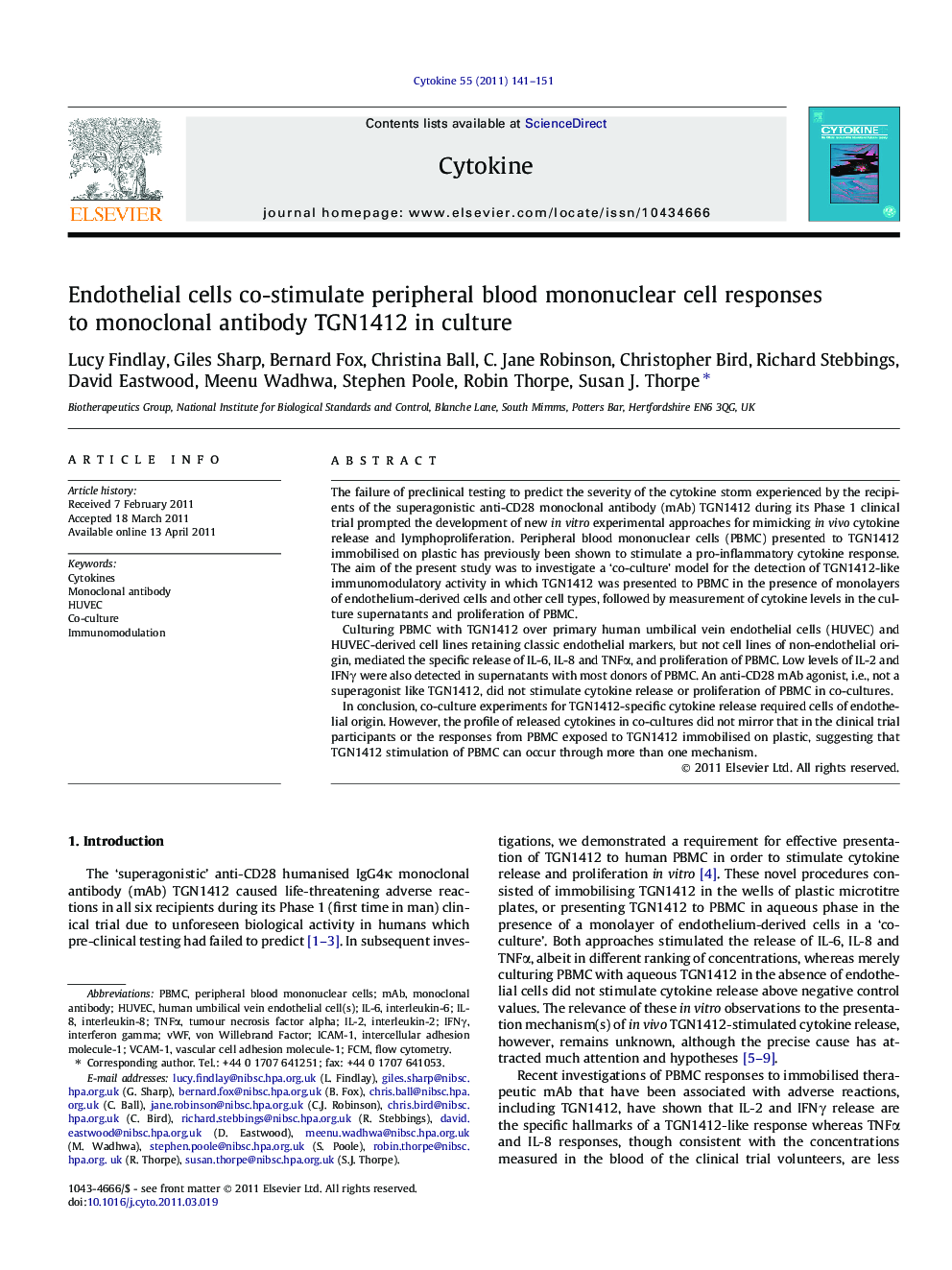| Article ID | Journal | Published Year | Pages | File Type |
|---|---|---|---|---|
| 2794680 | Cytokine | 2011 | 11 Pages |
The failure of preclinical testing to predict the severity of the cytokine storm experienced by the recipients of the superagonistic anti-CD28 monoclonal antibody (mAb) TGN1412 during its Phase 1 clinical trial prompted the development of new in vitro experimental approaches for mimicking in vivo cytokine release and lymphoproliferation. Peripheral blood mononuclear cells (PBMC) presented to TGN1412 immobilised on plastic has previously been shown to stimulate a pro-inflammatory cytokine response. The aim of the present study was to investigate a ‘co-culture’ model for the detection of TGN1412-like immunomodulatory activity in which TGN1412 was presented to PBMC in the presence of monolayers of endothelium-derived cells and other cell types, followed by measurement of cytokine levels in the culture supernatants and proliferation of PBMC.Culturing PBMC with TGN1412 over primary human umbilical vein endothelial cells (HUVEC) and HUVEC-derived cell lines retaining classic endothelial markers, but not cell lines of non-endothelial origin, mediated the specific release of IL-6, IL-8 and TNFα, and proliferation of PBMC. Low levels of IL-2 and IFNγ were also detected in supernatants with most donors of PBMC. An anti-CD28 mAb agonist, i.e., not a superagonist like TGN1412, did not stimulate cytokine release or proliferation of PBMC in co-cultures.In conclusion, co-culture experiments for TGN1412-specific cytokine release required cells of endothelial origin. However, the profile of released cytokines in co-cultures did not mirror that in the clinical trial participants or the responses from PBMC exposed to TGN1412 immobilised on plastic, suggesting that TGN1412 stimulation of PBMC can occur through more than one mechanism.
